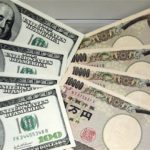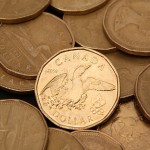The euro advanced against the US dollar on Tuesday, after data revealed the largest euro zone economy, Germany, expanded in the fourth quarter at the fastest annualized pace since the three months through March 2012. However, gains were limited as annual inflation in the euro zone remained under 1% for a fourth month and after the European Central Bank President Mario Draghi reiterated that the central bank is ready to ease monetary policy as early as next week if risks of deflation strengthen.
EUR/USD hit a session high at 1.3763 at 08:20 GMT, after which consolidation followed at 1.3752, adding 0.12% for the day. Support was likely to be received at February 24th low, 1.3708, while resistance was to be encountered at February 24th high, 1.3773.
The Federal Statistical Office (Destatis) reported today that the German Gross Domestic Product grew by 0.4% in the fourth quarter, compared to the previous quarter, in line with preliminary estimates and matching the median analyst forecast. On year-over-year basis, the German economy expanded at a 1.3% annualized rate, the strongest pace since May 2012, also in line with preliminary estimates and matching the experts forecasts.
However, gains were limited as demand for the 18-nation common currency remained under pressure, after yesterday it became clear that consumer prices in the euro area fell in January at the fastest pace since records began in 2001. Eurostat reported that the harmonized index of consumer prices for the euro zone declined by a record 1.1% in January after a 0.3% advance in the previous month. The annual inflation rate rose 0.8% last month, up from a preliminary estimate of 0.7% and after inflation increased by 0.8% in December. However, annual inflation remains near its weakest level ever and is less than half the ECB target of just below 2%.
The data suggested that consumer demand in the region remains weak and will probably continue to hamper economic development. The significant decline in the monthly consumer price index may prompt ECB’s policy makers to take action in order to stimulate the economy in the common-currency bloc as early as next meeting on March 6th.
Data scheduled to be released on February 28th may show that annual consumer prices rose 0.7% this month, signalling a fifth straight reading of inflation under 1%, which was referred by ECB President Mario Draghi as a danger zone.
“We don’t see what is defined to be deflation,” Draghi said on February 23rd, speaking to reporters after G-20 policy makers met in Sydney, cited by Bloomberg. “We are aware of the risks. The Governing Council is willing and ready to take any action in case these risks were to gain strength.”
For now, interventions are postponed at least March 6th, when the central bank is going to publish its quarterly macro-economic forecasts, which will provide first inflation predictions for 2016. Previous forecasts have revealed that the ECB should take more decisive steps and should further ease its monetary policy.
Meanwhile, home values in 20 large cities in the United States probably curbed their increase, with the corresponding index rising at an annualized rate of 13.38% in December, according to the median estimate by experts. In November home prices gained 13.71%. S&P/Case-Shiller will publish the official figures at 14:00 GMT today.
At 15:00 GMT the Conference Board research group is expected to announce the results from its survey on consumer confidence regarding the United States. The index of consumer confidence probably slowed down to a reading of 80.0 in February from 80.7 in the preceding month. Higher than expected readings will certainly provide support to greenback’s demand.
Consumer confidence, as an indicator, provides clues regarding the tendency in consumer spending in the country, while the latter accounts for almost two thirds of nation’s Gross Domestic Product.
Elsewhere, AUD/USD touched a daily high at 0.9044 at 1:21 GMT, after which consolidation followed at 0.9023, losing 0.13% for the day. Support was likely to be received at February 24th low, 0.8938, while resistance was to be encountered at February 24th high and also the highest level since February 18th, 0.9049.





